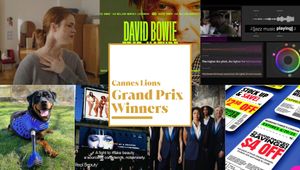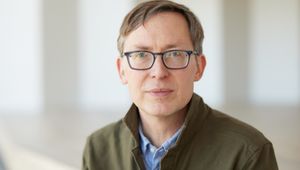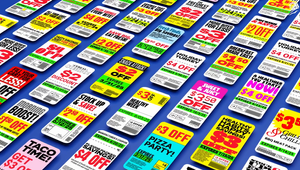
“I Carry My Landscapes around with Me”

Anna Bradfield is a healthcare and oncology brand strategist at VML Health.
After a lifetime of moving between art and marketing communications, I guess it’s inevitable that my career has drawn inspiration from a decorated artist who influenced me along the way. “I carry my landscapes around with me” is a famous musing of Joan Mitchell, the abstract expressionist whose New York art Foundation I attended many years ago. The meaning behind her words is simple: Mitchell believed the power of her paintings owed everything to her memories, which travelled everywhere with her. It’s a philosophy that, perhaps without realising it, has shaped my work as a brand strategist in health. Great strategy is the collision of data, creativity and insight – and the experiences we carry around with us are the landscapes we call on to colour everything.
If my career has taught me anything, it’s that there’s no single route into health strategy. My own journey has taken me in multiple directions – each one vibrant and different, but all incredibly valuable in helping me navigate the challenges we face in health.
I’ve been a teacher, an artist, and a frustrated entrepreneur. I’ve helped street children in Brazil use art to express themselves. I’ve taught creative writing in NY, mentored young women from disadvantaged backgrounds, and run workshops for underserved communities to help them find voice. I’ve had my own gallery in India, residencies in strange locations, and long stints in the classroom; I got a Masters at Cambridge, put myself through art school to become classically trained, and later relearnt molecular biology to develop a specialism in oncology strategy.
My entry into advertising – and the prequel to much of the above – came when I successfully got onto the WPP Fellowship. My place, deferred for a year so I could go off to art school, opened my eyes to the power of advertising. My mentor, Jon Steel – a genuine legend of our industry – showed me that strategic planning is about constantly refreshing our thinking and broadening our experiences. That encouraged me to continue my world tour of adventures, but it also cemented my love of strategy – because I knew that all those different experiences would fill up my memory bank and enrich my work. They’re the landscapes I carry around with me.
The Fellowship gave me an incredible grounding in planning – with comprehensive training in qualitative and quantitative research, brief-writing and brand planning. Very few strategists do that kind of training today, but it’s basically been the foundation of everything I’ve done since. It taught me skills that I applied to a broad range of CPG and corporate brands for over 10 years before I finally found my home in health.
The combination of all these experiences and learnings continues to guide my work. Why? Because health is life. As a strategist, the ability to draw on a real-world experience, to see an alternate perspective, or discover something new, is everything. They’re our teachable moments. And we get them by immersing ourselves in the world around us, and incessant curiosity in the audiences we serve. People with a disease don’t live their lives as patients, their condition is only a fraction of who they are. It’s our job to make connections with those broader truths and understand the deep human elements of what makes people tick.
When I reflect on how I got here, I realise that the stops along the way have all been connected. Art has been the throughline for everything I’ve done. From the streets of Brazil to the shelters of New York, the classroom to the pitch room, art has always been central to the story. It’s helped me generate insights, communicate ideas and inspire communities. I’m biased, but I truly believe that art methodologies are tailor-made for the work of a strategist; they can help tease out those deeply hidden insights, or give people tools to express things they otherwise could not.
Art methodologies work brilliantly in health. In difficult-to-discuss categories like cancer, or populations impacted by health inequities, there’s something about safe space, creative-based research that can inspire lightbulb moments that turn a strategy on its head. I’ve seen those moments inspire solutions that change lives.
So what does all this mean? To me, it shows our ability to succeed in marketing goes way beyond conventional skillsets. We bring who we are to everything we do. There’s much more to strategy than insight and data; capability will get you to the start line, but it’s the experiences we bring with us – and how we use them – that can push us to the front of the pack.
So my advice to anyone starting out on a career in strategy (or even generally in marketing communications), is simple: try it all. Don’t walk in straight lines, take multiple routes; live them, learn from them and stick them in the memory bank. Because if you carry your landscapes around with you, when you finally find the right home, those experiences will help you turn your work into art.















